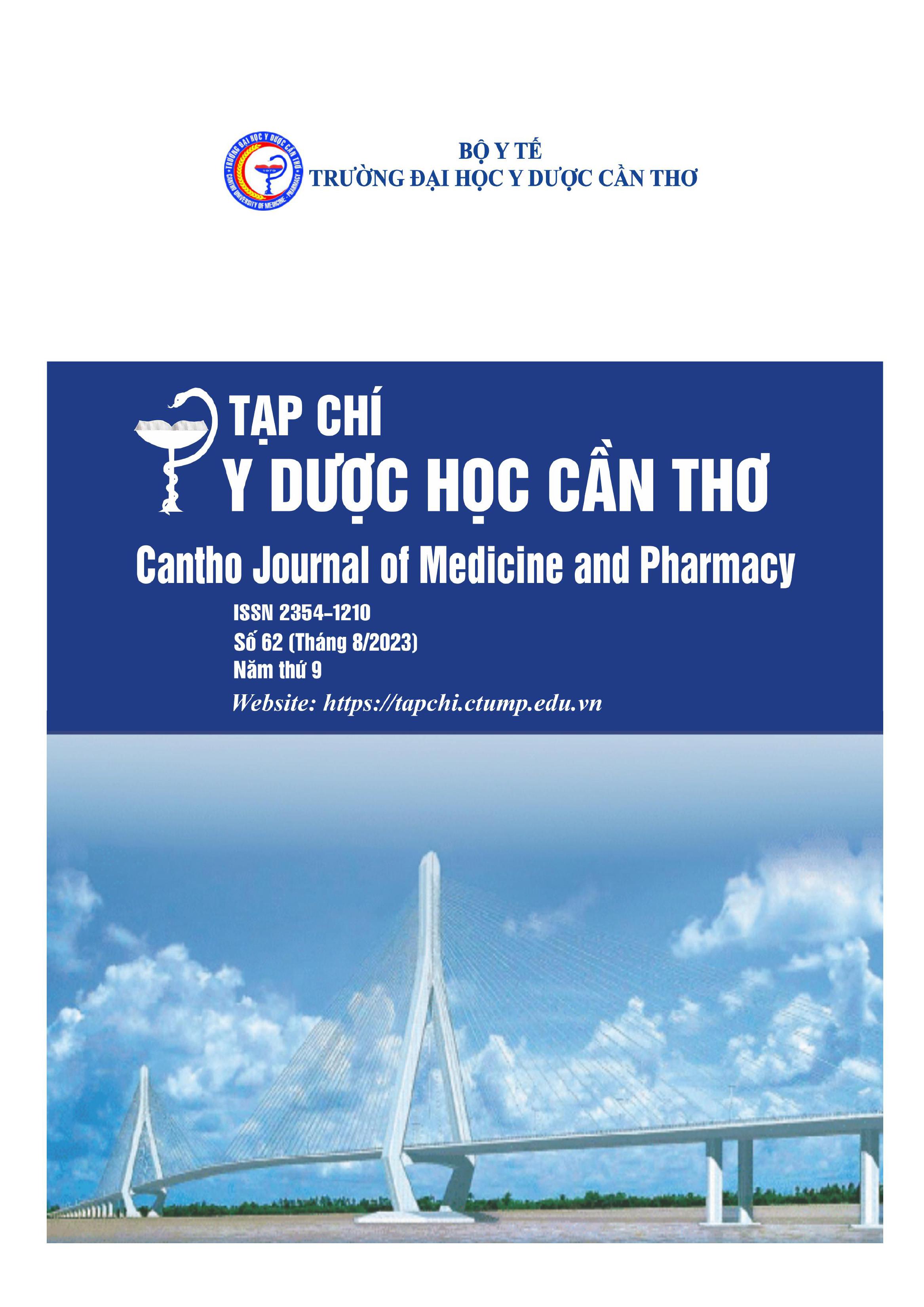RESEARCH ON CLINICAL CHARACTERISTICS, SUBCLINICAL FIGURES OF RHINOGENIC CONTACT POINT HEADACHE AT CAN THO ENT HOSPITAL IN 2021 -2023
Main Article Content
Abstract
Background: Rhinogenic contact point headache is a syndrome that acquired secondary to a contact between two opposing intranasal mucosal surfaces without signs of inflammation, mucosal hyperplasia, purulent discharge, polyps, or tumors. The referred headache may result from pressure on the nasal mucosa caused by the anatomical variations in nasal cavity in which septal deviation is commonly seen clinically. Objectives: To determine the proportion of clinical symptoms and subclinical features and to evaluate the surgical management outcome of rhinogenic contact point headache in Can Tho ENT Hospital from 2021-2023. Materials and methods: Patients diagnosed rhinogenic contact point headache with evidence of mucosal contact points on imaging and cessation of headache following topical use of lidocain 10% and decongestants at contact area. All patients underwent endoscopic surgery to separate the contact point in the nasal cavity. Study method: prospective study with clinical intervention. Results: The average value of preoperative VAS scale valued 5,34 ± 1,88, a week postoperative VAS scored 1.98 ± 2.37, 1 month 1.09 ± 1.65, 3 months 0.45 ± 0.13, the differences were statistically significant (p<0.001). Three months operatively, 91.4% patients presented without headache. Accompanying symptoms, namely nasal congestion, nasal drip, sneeze were significantly decreased. The surgical management outcome of rhinogenic contact point headache was relatively positive with 91.4% patients resulted in good outcome. Conclusion: Endoscopic surgical treatment of rhinogenic contact point headache resulted in good outcome with quality of live significantly enhanced.
Article Details
Keywords
contact point, septal deviation, headache
References
2. Ignazio La Mantia, Calogero Grillo, Claudio Andaloro. Rhinogenic Contact Point Headache: Surgical Treatment Versus Medical Treatment. Journal of Craniofacial Surgery. 2017. 29(3), 228-230, doi: 10.1097/SCS.0000000000004211.
3. Alwan Ammar Mohammed. Surgical Management of Rhinogenic Contact Point Headaches. The Medical Journal of Tikrit University. 2017. 22(1), 229-236.
4. Nghiêm Đức Thuận, Chữ Thị Hồng Ninh. Đánh giá hiệu quả của phẫu thuật nội soi chỉnh hình vách ngăn mũi tại khoa Tai Mũi Họng Bệnh viện 103, Tạp chí Y Dược học quân sự. 2012. 37(3), 85-88.
5. Rai Upasana Lungun, Devi Puyam Sobita, Singh Ningombam Jiten, et al.. Contact point headache: Diagnosis and management in a tertiary care center in Northeast India. Journal of Medical Society. 2018. 32(1), 51-56, doi: 10.4103/jms.jms_69_16.
6. Madani Seyyed Abdollah, Hashemi Seyyed Abbas and Morshedzadeh Seyyed Amirhosein. Results of Functional Endoscopic Sinus Surgery in Patients with Mucosal Contact Points Suffering From Chronic Daily Headache Non-Responding to Medications. Acta Facultatis Medicae Naissensis. 2013. 30(3), 159-164, doi: 10.2478/afmnai-2013-0008.
7. Trần Minh Hạnh. Nghiên cứu đặc điểm lâm sàng, cận lâm sàng và đánh giá kết quả phẫu thuật nội soi điều trị dị hình vách ngăn mũi gây nghẹt mũi tại Bệnh viện Tai Mũi Họng Cần Thơ. Trường Đại Học Y Dược Cần Thơ. 2015.59.
8. Nguyễn Công Hoàng. Đánh giá phẫu thuật nội soi chỉnh hình vách ngăn mũi tại khoa Tai Mũi Họng Bệnh viện Trung ương Thái Nguyên, Tạp chí Y học Việt Nam. 2017. 455(1), 184-187.
9. Tawfique S.A., Abbas B.A.. Surgical outcome for rhinogenic contact point headache in Rizgary Teaching Hospital in Erbil, Iraq. Journal of Medical Sciences. 2019. 23(2), 177-183, https://doi.org/10.15218/zjms.2019.023.


